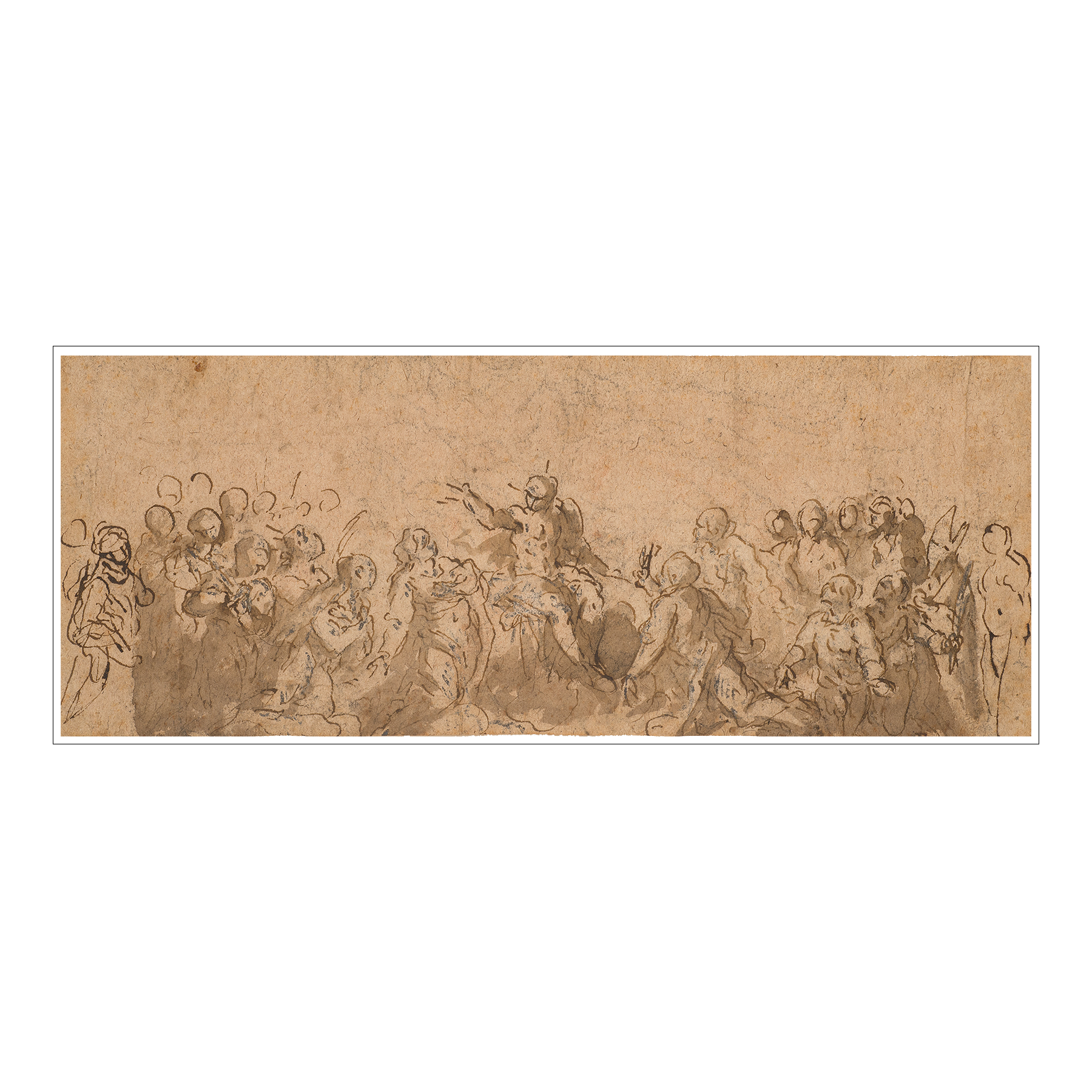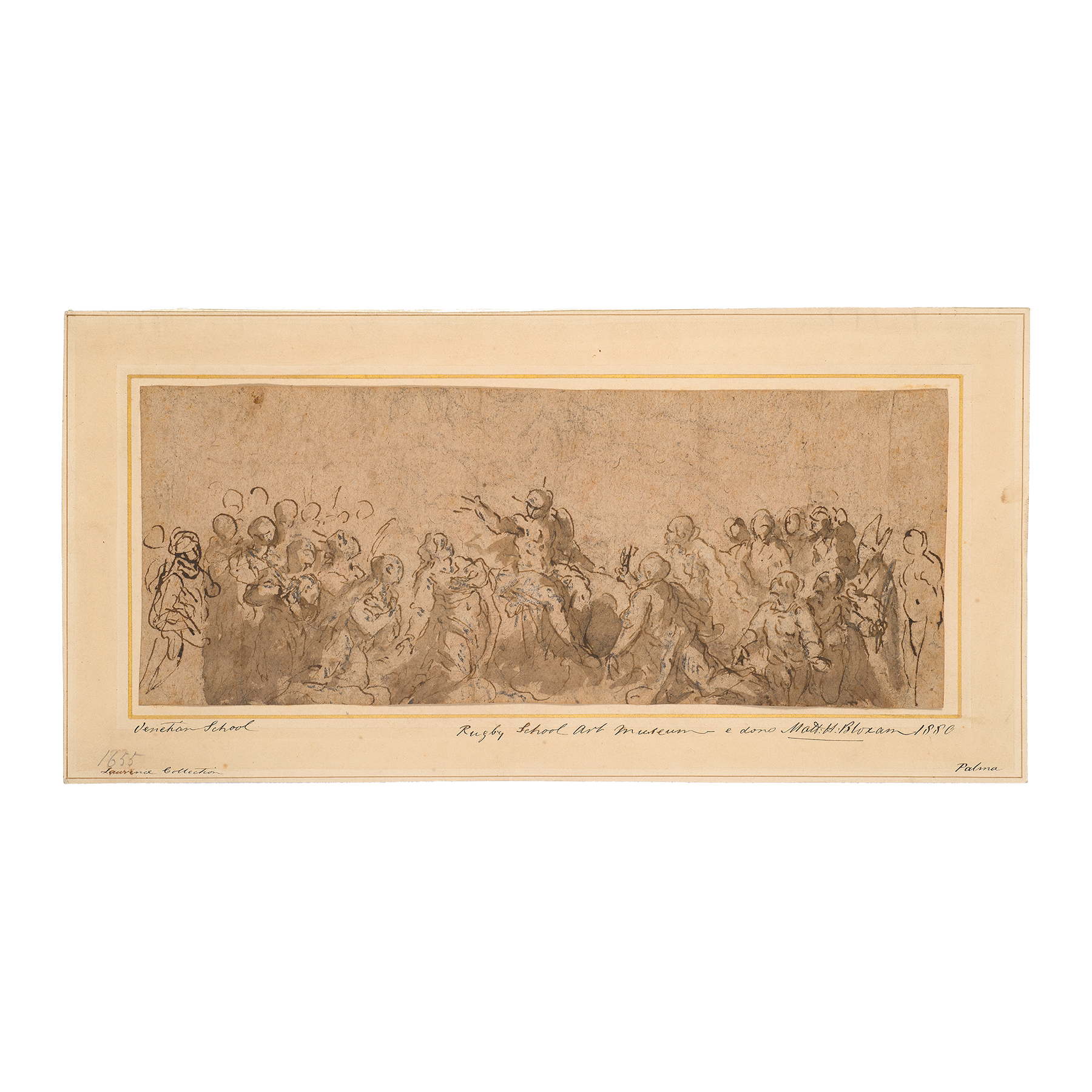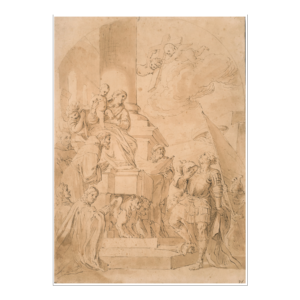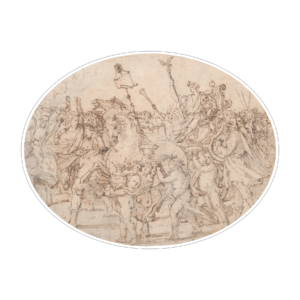Jacopo Negretti, called Palma Giovane
Venice, 1544-1628
The Last Judgment
Black chalk, pen and brown ink, brown wash, heightened with white (slightly oxidized).
95 x 244 mm – 3 7/8 x 9 ¾ in.
With number 1655 on the mount and with inscription Palma (verso).
Provenance – Sir Thomas Lawrence (1769-1830), Londres (L. 2445); M. H. Bloxam, inscription on the mount : Rugby School Art Museum e dono Matt :H : Bloxam 1880/ Venitian School/ Lawrence Collection/ Palma; Warwickshire, Rugby School Art Museum; London, sale Christie’s, 4 December 2018, n° 32; private collection.
Literature – Anne Popham, typescript catalogue, Warwickshire, Rugby School Art Museum, no. 31.
Born into a family of artists, Jacopo Negretti, known as Palma Giovane, received his artistic training from his father Antonio and his great-uncle Palma Vecchio. Sent to Rome by his first patron, Guidobaldo II della Rovere, Duke of Urbino, he was introduced to painting by studying the works of Michelangelo and Mannerist painters such as the Zuccari brothers between 1568 and 1572. Back in Venice, greatly influenced by Titian and Tintoretto, he obtained his first public commission after the fire of the Doge’s Palace in 1577: three paintings for the ceiling of the Sala del Maggior Consiglio. After the death of the great Venetian masters – Titian, Veronese and Tintoretto – he took a prominent place in Venice and was entrusted with the main works in the city and in Veneto between 1580 and 1620.
The graphic corpus of Palma Giovane is very large and varied. This sheet is part of his primi pensieri, drawings which served him to set up his compositions, usually with the pen and ink: swiftly sketching the figures with small swirling lines, he schematized the shapes while masterly rendering the space and suggesting the depth thanks to the touches of wash.

This study is one of the first preparatory drawings Palma made for the monumental canvas (4 x 16 m) of the Last Judgment (Ill. 1) that he painted between 1594 and 1595 in the Sala dello Scrutinio of the Ducal Palace in Venice.[1] After the fire of 1577, which destroyed several rooms of the Doge’s Palace, Venice entrusted the restoration of the decorations of this room dedicated to the votes of the Council to several artists among whom Pietro Liberi, Pietro Bellotti and Andrea Vicentino. Palma Giovane was in charge of creating a grandiose painting on the southern wall, illustrating the themes of the exercise of justice and the separation of virtues and vices.[2] In the center, Jesus, surrounded by angelic choirs, pronounces the judgment, blessing the elect with his right hand and rejecting the damned with his left.
[1] Cf. Mason Rinaldi, Palma il Giovane. L’opera completa, Milan, 1984, n° 539, fig. 213. Other studies for this work are in the Berlin Kupferstichkabinett and in the Salzburg Universitätsbibliothek, Inv. 179 (Cf. Idem, n° D14 et D179, fig. 211-212).
[2] Palma was inspired by Tintoretto’s Paradise, a huge canvas (9.90 meters by 24.5 meters) painted between 1588 and 1592, which covers one of the walls of the Sala del Maggior Consiglio.







